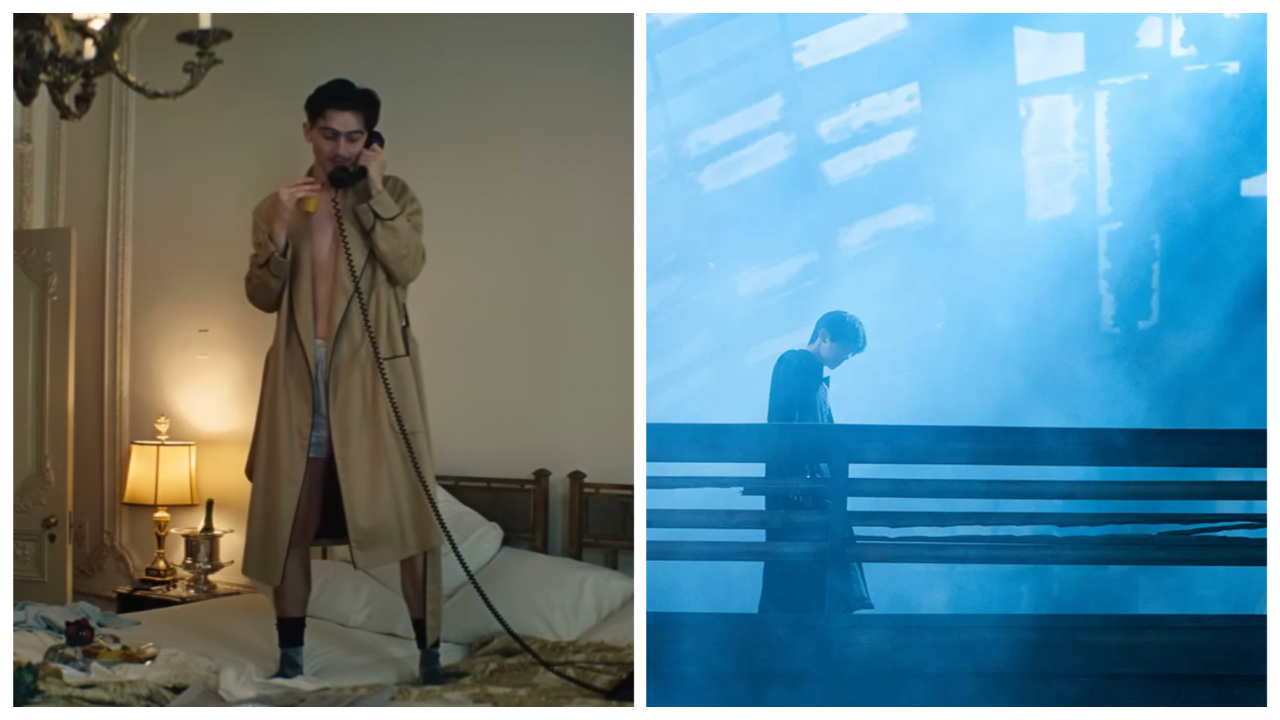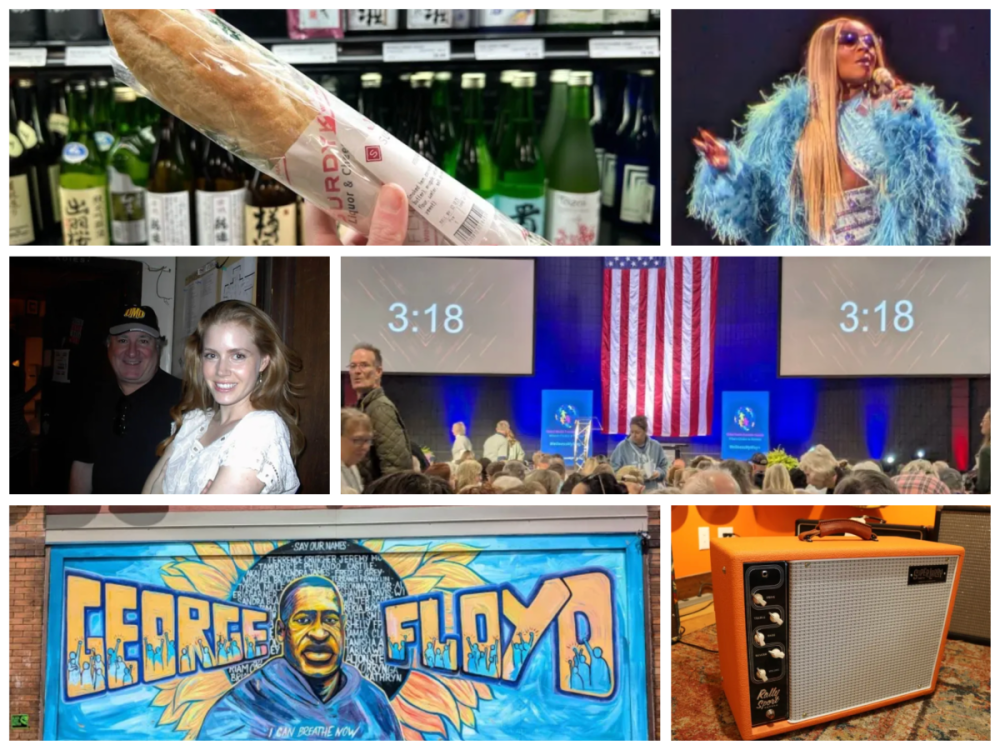Back in late 2020, as I was living high off of the COVID-boosted unemployment hog, I wrote an essay/obituary for the Dinkytown McDonald's that argued the now-demolished chain burger joint represented the vanishing egalitarian commons, albeit through a curious hyper-corporate lens.
As the once-quirky neighborhood becomes even more sterile, you might not expect McDonald’s closing one of its 38,000 worldwide locations to elicit an outpouring of online mourning. But you’d be wrong. Tinged with only hints of irony, the reflexive mourning witnessed across local factions of the internet proved that this was an important McDonald’s. Through some strange alchemy of time, geography, and demographics, the Big Mac destination just north of the U gained a soul. And also… a reputation.
My high-mindedness around the architecturally significant "Drunk Donald's" was interspliced with quotes from friends like...
“I both vomited and fingered someone in that McDonald’s," one shared with me, tone genuinely wistful. "I fell asleep in there at least once."
“A good place to cool your heels post-party, get some food in your stomach—it was a lifesaver for us,” said another friend, this one known to sip covert PBR via his plastic McDonald’s cup.
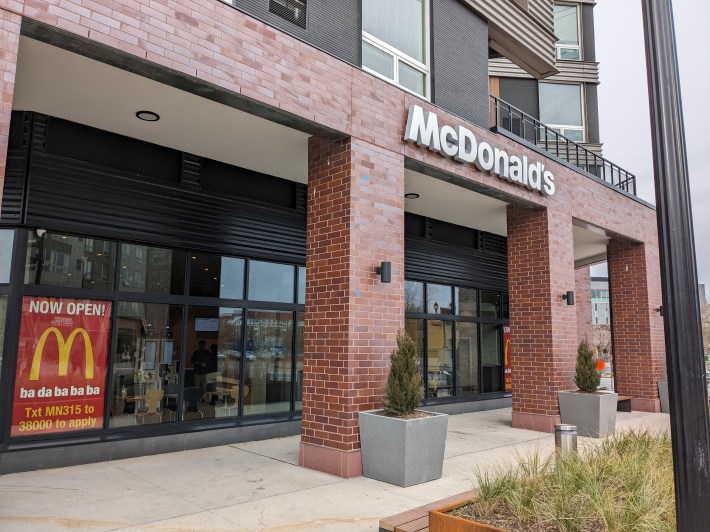
At the risk of angering the density-at-all-costs crowd, Dinkytown seems worse off now that the lively, messy, beefy antics once housed beneath that frumpy, wizard-hat-looking roof have been lost to a deflatingly ugly 308-unit apartment building that gained infamy for ripping off students before it even opened.
Or maybe not. Maybe, just maybe, the just-opened McDonald's stationed beneath the faceless six-story property called Identity Dinkytown is... good? Could it recapture even a hint of that "Drunk Donald's" magic?
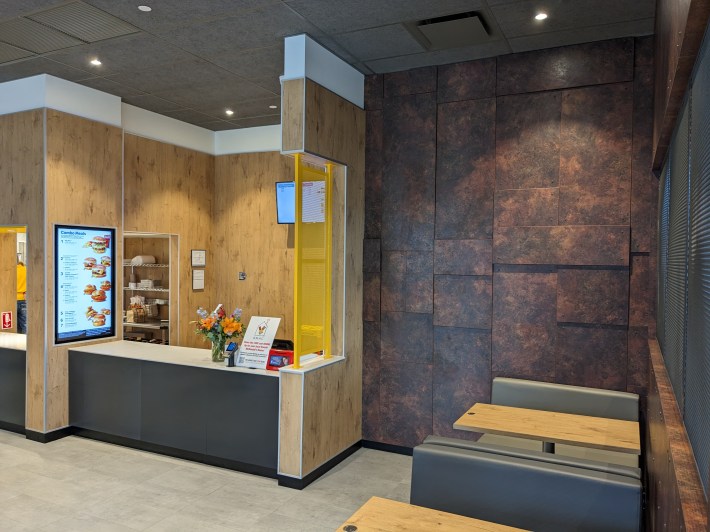
No.
Not even close. A recent lunchtime visit to 1425 Fourth St. SE confirmed the worst: Minneapolis's newest McDonald's is its dullest.
Gone is the dated Gopher paraphernalia that decked the bright interior of the double-decker Drunk Donald's, replaced by two odd murals—one of a bird on telephone wire, one of a payphone shouting "HELLO???" Gone, for the most part, are the hustling workers, replaced by dystopian digital ordering kiosks. Gone is any sense of kitsch.
My modest lunch—adequate quarter-pounder with cheese, room-temp fries, Diet Coke—came to $11.86, and I felt trapped inside a charmless bank lobby while eating it solo. (This is a formerly clown-themed restaurant that once used smiling hamburgers as stools, proving that fun is, in theory, possible.) There wasn't much chatter coming from my fellow diners, though a steady whooshing from the hidden kitchen could be heard over a quiet Top 40 soundtrack. The greige finishings proved unrelenting.
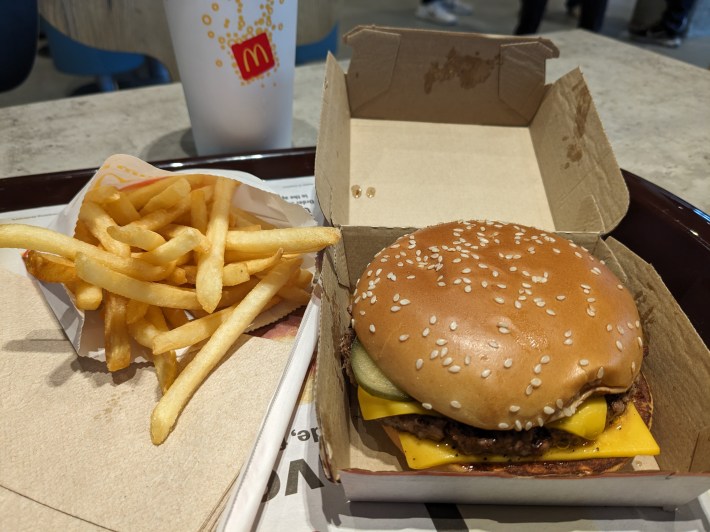
Fast food is concocted to satisfy our lizard-brain lust for salt, fat, and sugar, and maybe that's all current students need from the new Dinkytown McDonald's. However, I reserve the right to remain nagged by the feeling that things don't have to be this lifeless, this bleak. I'm sorry, dining there was a ba da ba ba bummer!
For those with long enough memories, the idea of mourning a slightly superior link in a multi-national chain would be unfathomable; students staged a 40-day occupation of Dinkytown in 1970 to protest the arrival of a quaint regional hamburger chain. (The even cooler-looking original Dinkytown McDonald's had opened seven years earlier.) Kat Hilleren-Policy, a current U of M student once who dined at Drunk Donald's alongside her parents, presents perhaps a more level-headed view than the author of this rant.
“I just think that it’s definitely modernized so it’s not going to hold the same value that it used to,” she told the Minnesota Daily earlier this month. “But it’s McDonald’s and I think the students will love it the same way.”

My big, big, big ask: Do we have to settle for the aesthetically insulting structures that developers belch out in cities across the country?
As someone who's a sicko for early 20th century builds, I understand that slashing away at old-growth timber and paying skilled craftsmen almost nothing isn't sustainable today. There's a housing crisis, yes, but are market-rate abominations like Identity Dinkytown the best we, citizens of the seventh richest country on Earth, can do to address it? We shouldn't be forced to realize how little concepts like beauty matter when weighed against profit every time we walk down the damn street.
In a society that considers so many bedrock things to be privileges—health care, a decent education, not getting gunned down in public—today's interchangeable cityscapes smack of additional retreat, the sinking feeling of living inside a death-rattling empire that provides most folks little more than contempt. Self-medicating that existential ache with cheeseburgers, circa 2023, is supposed to be the one thing we can still get right!
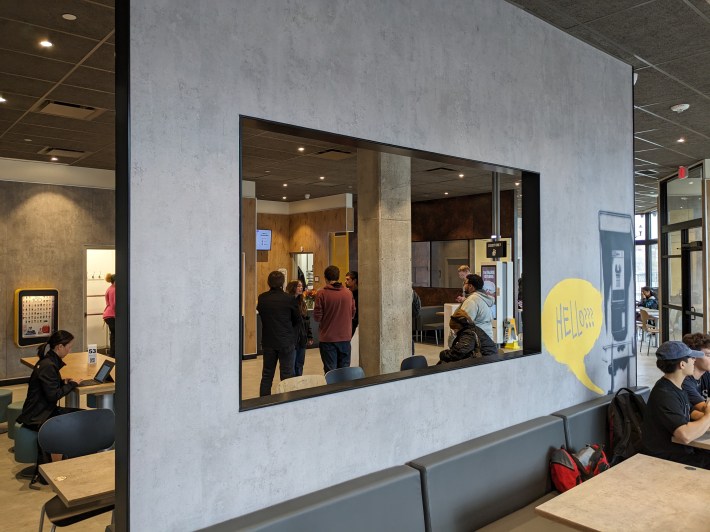
In any case, back to the unappealing new McDonald's.
For expert insight, we turned to Kate Wagner, the creator of McMansion Hell who now works as architecture critic for The Nation. (Wagner wrote about the death of another notable McDonald's, Chicago's Rock 'N' Roll McDonald's, back in 2019.) "Wow, this is really sad," she said upon learning about the legacy of Drunk Donald's.
Wagner generously continued with high-level fast food design analysis.
I think when we talk about spaces like McDonald's we're talking about a number of factors converging at once (some, such as a predilection for neutral colors, as is noted in the piece, have happened before). This particular iteration of "greiging" if you want to call it that, or rather "debranding" began 15 years ago around the time of the recession.
Around the 2000s the changes were already coming. There was a huge cultural pushback against fast food I remember very clearly in the mid-2000s, coming off the publication of Fast Food Nation, and Super Size Me, which a lot of kids including myself had to watch in school. This occurred at the same time as the rise of fast casual chains such as Chipotle which differentiated themselves in terms of quality and atmosphere even though they, too, are fast food.
Additionally, there were so many lawsuits regarding things like the Playplace that many fast food restaurants opted to quietly close theirs, especially when combined with allegations that the brands were enticing children.
Aesthetically, the recession, combined with the increased rise of the tech industry and its associated aesthetics proved to be the death knell to over 40 years of postmodern design, and that included heavily branded spaces like fast food restaurants, which were already looking more towards a fast casual aesthetic model. The end result is McDonald's that look more like tech lobbies than restaurants, but it took like 15 years to get to that point.
Thus concludes the longest, possibly first-ever, and hopefully last review of a Twin Cities McDonald's location. Extending one last greasy RIP to the one we lost.
dinkytown mcdonald's (1963)
— nonstandard mcdonald's (@nonstandardmcd) December 15, 2020
minneapolis, mn
deceased as of 4pm cst yesterday, 12/14/2020
thank you to all who submitted - we are sorry for your mcloss. pic.twitter.com/okfhpKh1AB


